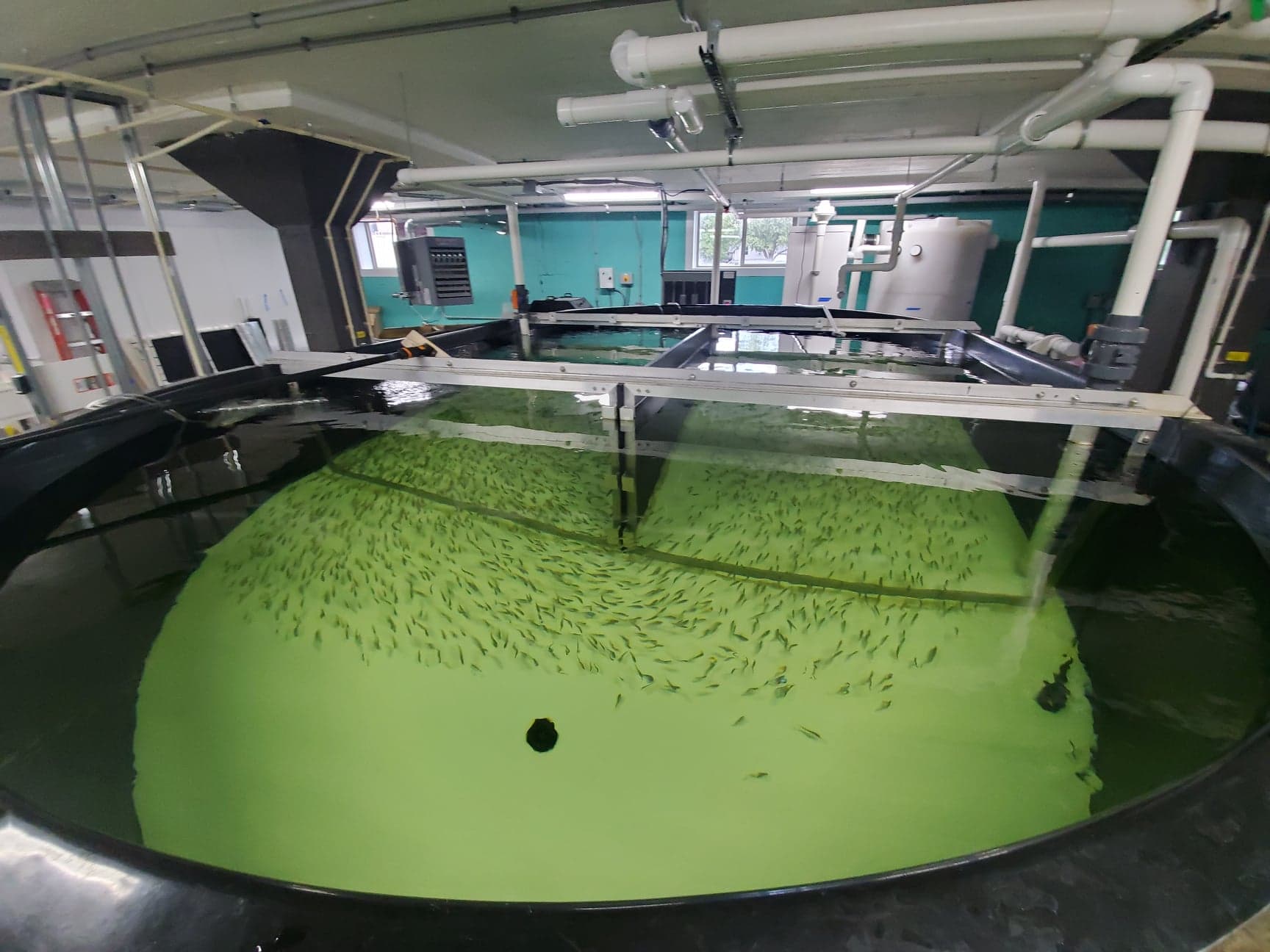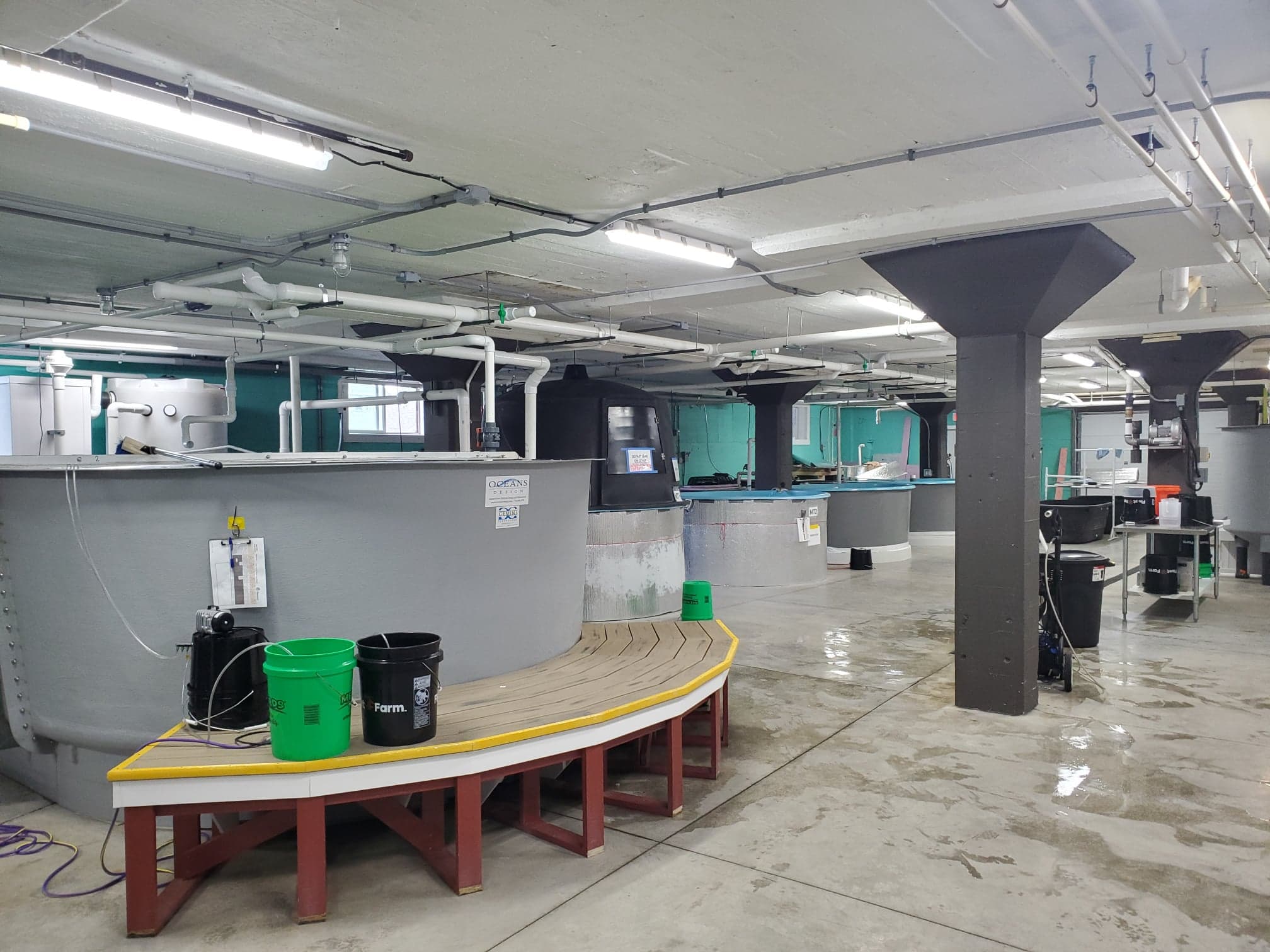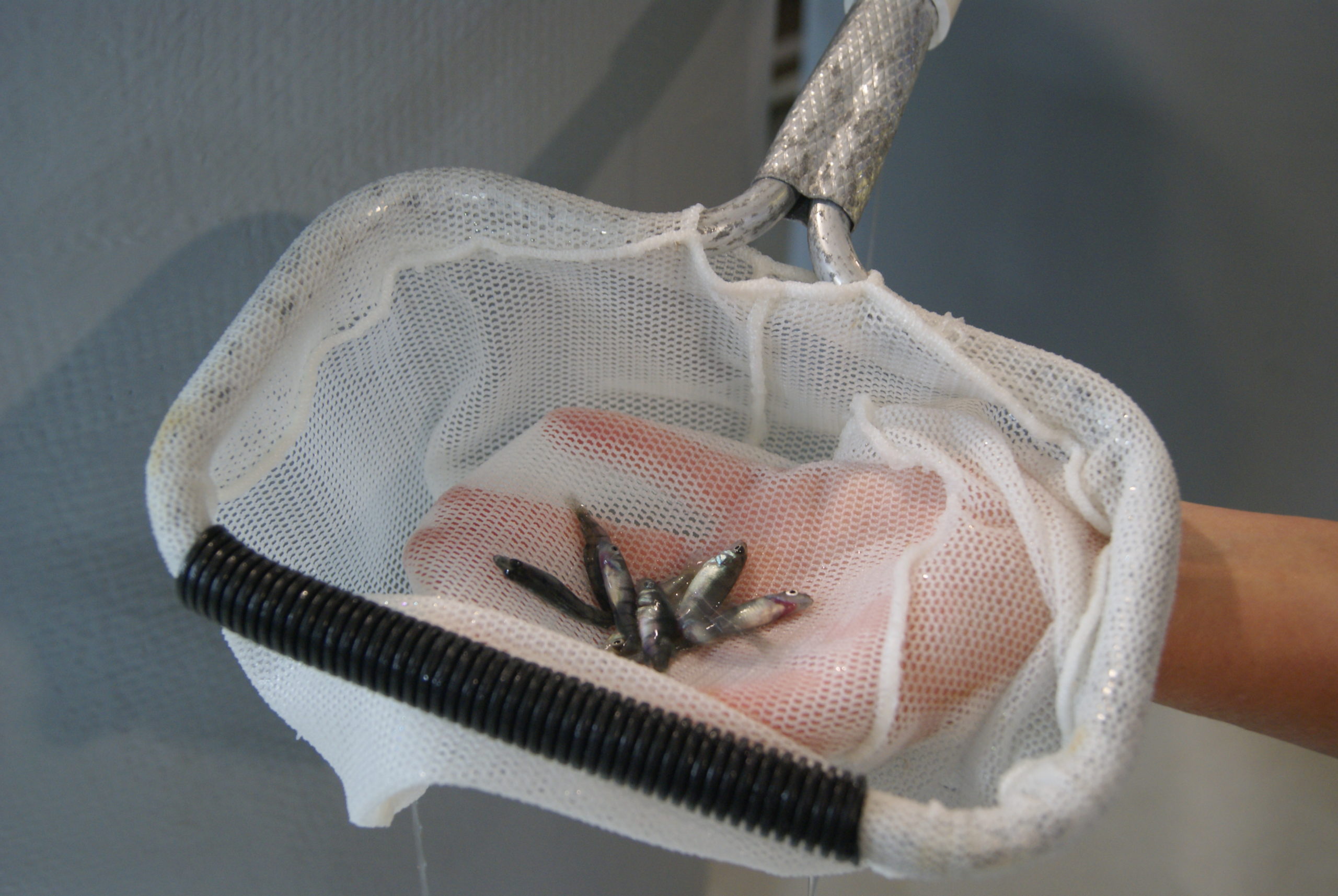
For decades, Green Bay Wisconsin National Guardsmen stored munitions and trained new recruits in a stucco-clad, Chicago Street building built in 1918.
Now, the building is home to hundreds of fish babies.
The Farmory, an urban farming nonprofit, is the only indoor fish hatchery in Wisconsin. The nonprofit focuses on sustainable growing practices for both greens and gills. When it was founded in 2016, the focus was on growing produce indoors using aquaponic systems to both teach and provide a new source of food in the state’s harsh winters. As the program grew, they introduced percids such as yellow perch, walleye and sauger into their arsenal.
Executive director Claire Thompson said most aquaponic operations use tilapia because of its cheap price point due to massive global exports.
“There’s also some perceptions about (tilapia) here, especially in the Midwest, that it’s not as good of a fish,” said Thompson.
The Farmory settled on growing yellow perch to complement their vegetable production because of its beloved place on Wisconsin plates and its volatile population over the years.
They soon discovered a problem. No one was growing perch indoors yet.
“That led us down the road toward ‘more research needs to be done,’” said Thompson. “We need to be able to set up our own hatchery to produce a steady and consistent supply of year-round, feed-trained fingerlings that are grown from the egg in an indoor environment.”
In the bottom level of The Farmory, budding fish are separated by a bio-secure room and health protocols. Volunteers and entrepreneurial and technician students take turns monitoring temperatures in the complex hatchery. Each separate tank mirrors life cycles and seasons of growing yellow perch and their walleye cousins. During a late June visit, an insulated tank is sealed shut and a quick peak inside shows adolescent perch huddled together for warmth. The fish don’t know about the humid Midwest summer outside because their faux-winter hovers around a chilly 30 degrees Fahrenheit.

The Farmory (Photo Credit: John McCracken for Great Lakes Now)
Schools in session
Being a nonprofit allows The Farmory to not have to worry about mass production or profit margins as much as for-profit hatcheries that already exist on slim margins. Instead, they worry about being a stepping-stone for future fish farmers.
The Farmory offers 12-week technical programs that provide hands-on trainings and lectures from researchers and ichthyologists. Since The Farmory launched both pathway programs in 2020, they have had 34 graduating students.
Thompson said that for students interested in aquaculture there are only two options in the state. Students can go to a four-year program at either University of Wisconsin-Stevens Point or UW-Milwaukee.
For the students coming through The Farmory’s doors—who range from recent high school graduates to retirees—fish-wrangling fares better than test-taking in the growing industry.
“There’s a lot of jobs in the aquaculture industry that don’t require a four-year degree,” Thompson said. “You have to have people with basic technical skills.”
The Farmory’s students are much like their customers. Their interest and aspiration range from basement or backyard hobby farming to scalable commercial production. The Farmory grows fingerling perch until they are between 2 to 4 inches and then customers take them to grow them to adult size for spawning or frying.
In 2020, they had 60 customers and sold fish across state lines to Michigan, Ohio and Minnesota. Thompson said most customers bought between 100 and 500 fish, but a handful purchased thousands of perch pounds to fuel their own commercial fishery endeavors.
“We want to be able to secure a local food supply. We also want to teach people about aquaculture as a viable business opportunity,” said Thompson.

The Farmory (Photo Credit: John McCracken for Great Lakes Now)
Problems come with being new
Being the only indoor perch hatchery comes with its challenges though.
The COVID-19 pandemic hindered The Farmory’s first hatching year. They weren’t able to get brood stock up to full capacity due to supply-chain complications. The urban farm is working on getting their population to a sustainable level.
Additionally, Thompson said that there is a lack of research and applied standards when it comes to growing perch indoors.
“It’s not like any other agricultural commodity product like dairy or chickens,” said Thompson.
Thompson said yellow perch have an innate biology barrier, where survival is harder to come by—something that is important for an organization focused on producing and spreading young perch. Perch also don’t have a set diet. As of now, The Farmory feeds their perch a trout diet, which Thompson said is slightly fattier.
“We have to find a way to get enough people into the business of (indoor fisheries) to we can work with feed companies to be able to develop affordable feed,” said Thompson.
On the other end of the process chain, Thompson said a decline in the perch population since the booming years of yore has led to a lack of skilled fish processers and sustainable operations.
“Because of the decline of Great Lakes commercial fishing, we’ve also seen a decline in processors to clean and process fish,” said Thompson.
Smaller, sustainable scale
Sharon Moen echoed a lot of Thompson’s observations of the industry at large.
Moen is an outreach specialist with Wisconsin Sea Grant— a statewide research and stewardship program dedicated to the resources of Great Lakes—in charge of the Eat Wisconsin Fish Initiative. Eat Wisconsin Fish was established in 2013 to become a hub for information and resources for the state’s fish producers and consumers.
Moen said the many people in the industry believe the future of fish farming is heading indoors because of the effects of climate change on the industry, its habitats and the fish themselves.
“Algae blooms and invasive species can’t get into the water,” Moen said of indoor, contained aquaculture systems.
Moen also said that the way consumers and producers import and export massive numbers of commodities has a continued effect on the planet due to gas emission.
“We have to stop carting things around the globe in order to really truly cut down on carbon emissions,” said Moen. “We need to learn to eat and grow our food more locally.”
In the past year, Moen observed how breaks in the supply chain—caused by global catastrophe such as the COVID-19 pandemic—make everyone and every supplier vulnerable. Just as the majority of The Farmory’s students are scaling down, many suppliers are focused on local, small-scale consumption.
“I think most (fisheries) are very modest people raising for their local community consumption,” said Moen.
Moen said to alleviate stress on perch’s floundering population and high price point – which she observed at upwards of $20 a pound last year – consumers could switch to a more abundant species like whitefish.
Both Moen and Thompson pointed out that adjusting to problems in the industry, whether you’re growing fish in a bedroom tank or in cavernous outdoor ponds, takes agility and a love for fish.
“It’s like gardening,” Moen said. “You have to have a knack for it and take care of what you’re growing.”
Catch more news on Great Lakes Now:
Low but Stable: Yellow perch populations in Great Lakes’ bays and open waters
On Michigan’s inland lakes, ice fishing with less ice, and fewer fish
API key not valid. Please pass a valid API key.Featured image: The Farmory (Photo Credit: John McCracken for Great Lakes Now)




